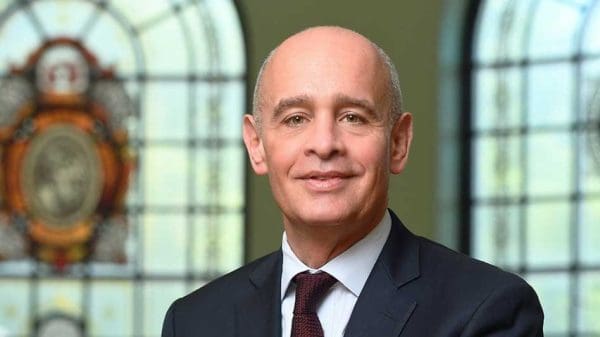During World War II, Jewish families lost millions of dollars’ worth of fine art to the Nazis, and their descendants are making extraordinary efforts to reclaim those paintings and artifacts. But the process of proving their claims is complex and requires the expert assistance of art historians who specialize in such research.
Courtney Harris, a 2011 graduate of the Krieger School, pores over historical sources and data bases, tracks down experts in the work of particular artists, and tries to authenticate the claims of families who come to her employer, the Commission for Looted Art in Europe. Based in London, the commission is a nonprofit organization affiliated with the Central Registry of Information on Looted Cultural Property 1933–1945, which operates under the auspices of the Oxford Centre for Hebrew and Jewish Studies.
Courtney’s journey to the job of her dreams began in Krieger classrooms, but it became a reality thanks to internships she landed through the university and the assistance she was given by faculty members. This issue of the magazine is devoted, in part, to how the School of Arts and Sciences puts shoulder to the wheel to assist students in developing the academic skills and real-world experience they need to compete for positions that will fulfill their ambitions.
Courtney arrived at Johns Hopkins in pursuit of a major in international studies, which enabled her to take a variety of classes. “My favorite classes were the ones I took in the history department with Richard Kagan,” she recalled. “Occidental Civilization in my freshman year, Spain: The Golden Age in my sophomore year, and Collecting in America’s Gilded Age during my senior year. He took a holistic approach to the study of history and used paintings and maps to explain how a certain historical moment was significant.”
Courtney’s interest in the historical questions in Kagan’s classroom led her to a double major in art history. She was given permission to enroll in Michael Fried’s graduate seminar on Classics of Art Criticism. She met Rebecca Brown, whose course on The Politics of Display in South Asia exposed her to how publicly displayed artifacts in India reflect tensions associated with identity and tradition.
But it was in Elizabeth Rodini’s course, Introduction to Museums, that Courtney realized she could aim for a career that would blend her interests in international studies, art history, and museums. “Someone from the National Archives spoke to Rodini’s class about the large amount of Nazi-era documentation held there, and it was the first time I became aware that it was possible to have a career in my field.”
What was missing from the equation was work experience, and Courtney began searching for internships. Her first success was on campus in the Homewood Museum, where she worked as a tour guide and later as a development assistant. That gave her the experience (and the courage) to approach the Walters Art Museum in her sophomore year to work with a curator who needed someone fluent in French. The study-abroad office helped her find academic programs in Europe with internships at museums, like the one she secured in Florence at Villa I Tatti, the Harvard University Center for Italian Renaissance Studies. When Courtney returned to Hopkins, she was accepted as a student curator at our own Evergreen Museum where, with the guidance of director Jim Abbott, she prepared an exhibition based on the work of John Garrett and his wife, who had turned the American Embassy in Rome into a place of cultural exchange between Italy and America in the 1920s and 1930s.
Courtney began to wonder what she would do after graduation. Enter Professor Kagan again. He gave Courtney a contact at the Museum of Fine Arts in Boston, and she was accepted as a graduate research intern, working on the provenance and history of European decorative arts objects acquired between 1877 and 1893.
With this rich background in hand, Courtney was able to compete for the job she now holds with the Commission for Looted Art. Her undergraduate background, coupled with the MA she received subsequently from the Courtauld Institute of Art in London, prepared her for the demanding position. Professor Kagan is not surprised by her success. “With her love of learning and passion for art history and history, Courtney was a pleasure to have had in class,” he said. “I’m thrilled to learn that her dream of pursuing a museum career has been realized.”
Hard work, a capacity to focus, the ability to move across fields and absorb the analytic skills and substantive background those fields offer, and the sheer gumption to break out of the university community and take those first steps into the working world—that is what we encourage our students to do in order to craft their futures. The work Courtney is doing makes all the difference to the heirs who seek to right one of the greatest wrongs ever perpetrated. Jewish families who lost everything in the Holocaust are looking to recover what belongs to them. People like Courtney are bringing their formidable knowledge to bear in that effort, and we are proud of their role.
Sincerely,
Katherine Newman
James B. Knapp Dean


